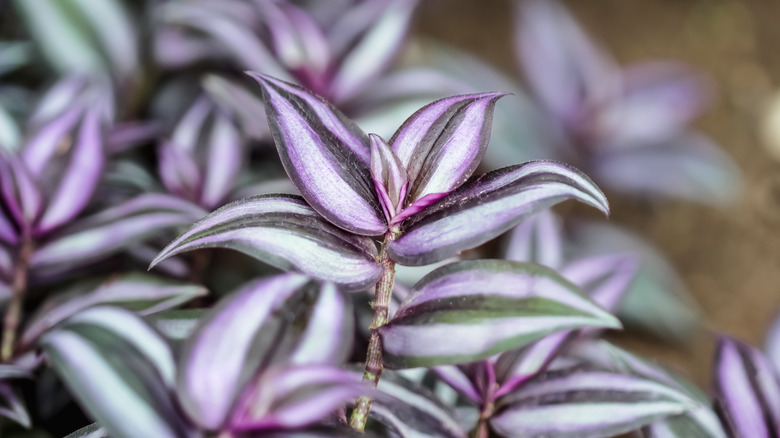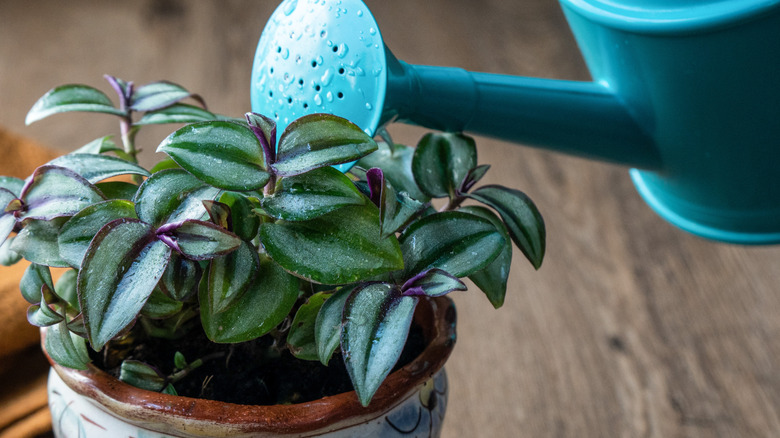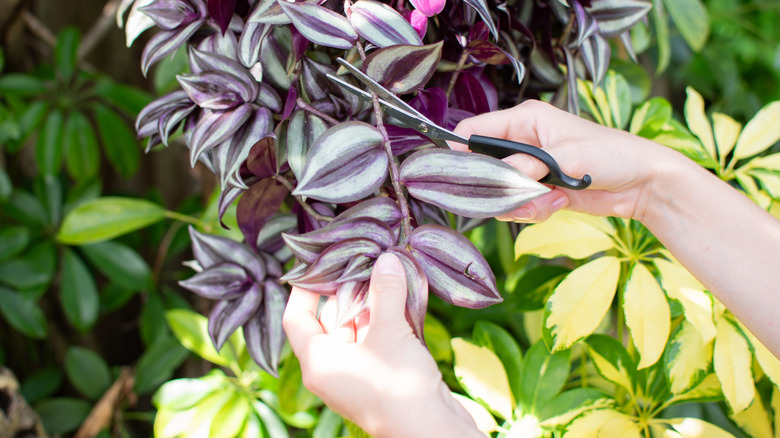Common Reasons Why Your Indoor Inch Plant Is Dying (& What To Do About It)
With multi-colored green, purple, and silver foliage that cascades beautifully out of hanging baskets, inch plant (Tradescantia zebrina) is a popular houseplant thanks to its easy-to-grow nature and subtle pops of color. Although healthy inch plants have vibrant, eye-catching foliage, when sick, they can display leaves that are mushy and pale or crisp and brown. Pests or diseases are sometimes to blame when these plants are unhealthy, but inch plants can just as often fall sick and die due to either neglect or over attention when well-meaning plant parents provide the wrong amounts of water, sunlight, or fertilizer.
These foliage plants are types of spiderworts that are also known by the names wandering dude or zebra plant. When grown as houseplants they need moderate water, medium to bright light, and well-draining soil to thrive. Each of these growing requirements contributes to well-balanced plant care to keep inch plants healthy. When one element is lacking, it can upset the inch plant's delicate balance, leading to a sickly houseplant.
How the wrong growing conditions can kill an inch plant
While inch plant can tolerate full sun, medium to bright, indirect light tends to work well for most houseplant owners. Lower light levels can cause these houseplants to grow weak, producing sparse foliage. Meanwhile, inch plants prefer moist soil, so they should be watered when the surface of the soil is dry to the touch. If left for too long without water, the stems will start to die back at the roots.
On the other hand, if the plant is watered too often and the growing medium becomes soggy, this can lead to root rot, which can kill the plant. Another important element in keeping the plants' roots healthy is drainage. Plant pots must have holes in the bottom and the potting mix needs to have good drainage as well. Plus, during the winter months when the houseplant's growth has slowed, plant parents need to water less often to adjust for shorter days and cooler temperatures.
Overwatering is not the only instance when too much care can cause harm to these plants. Indoor gardeners who are overzealous with plant food can also unwittingly damage inch plants. Fertilizers applied too heavily can burn plant roots, and this part of a plant care routine is particularly problematic when lower amounts of light are available, since with less light, plants need less nutrients. Of course, growing conditions aren't the only things that can kill inch plants — plant caretakers should also check for indoor plant bugs such as spider mites.
When an inch plant can't be saved and how to propagate a cutting
Sometimes these houseplants simply can't be saved if the plant has been under or overwatered for too long, or if it hasn't been exposed to enough light for months at a time. Roots that are rotten, and stems that have dried to a crispy brown will not be healed by even the most attentive care. The only way to salvage inch plants in situations like this is to take cuttings and regrow new plants — after checking that pests are not the cause of the plant's ailment, of course.
The good news is that inch plants are extremely easy to propagate from cuttings, requiring only a jar of water to stick the cut end into, coupled with medium to bright indirect light. And if you never get around to potting the rooted inch plant in soil, it won't be a problem. As long as you keep the roots in fresh water, inch plant is a plant that can grow in water indefinitely.


